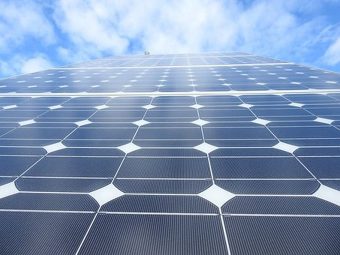
When we think of solar panel efficiency, we usually think in terms of how much of the sunlight hitting the panel gets converted into electricity. Output efficiency is normally computed by laboratory testing, where the ambient temperature of the test environment is carefully controlled. That number is important, of course, but the temperature of the panel when it is up on a roof in direct sunlight on a hot summer day can significantly impact its performance in the real world. Just as a naturally aspirated internal combustion engine loses power as elevation increases, a solar panel loses efficiency as its temperature rises.
This week, Panasonic announced that its latest HIT solar panel performs best in high temperature environments. The technical explanation is that the output temperature coefficient for its latest HIT solar panel is -0.258%/°C2. That’s an improvement of 0.032 percent.
According to a Panasonic press release,
“Output temperature coefficient is a vital metric in evaluating solar modules as a measurement of how quickly their conversion efficiency degrades as the temperature rises, thereby reducing the output. The standard silicon solar cell’s output temperature coefficient is -0.50%4, which denotes a decline of 0.50% in the conversion efficiency as the module temperature rises by 1°C.
“For instance, at the module temperature anticipated in the summer months (75°C), the conversion efficiency will decrease by 25% in comparison to the environment at 25°C. Panasonic HIT® modules, which boast an improved output temperature coefficient, will nearly halve the decline in the conversion efficiency, significantly increasing performance in high temperature settings.”
Mukesh Sethi, group manager of Panasonic’s solar division in North America, said, “This latest innovation, combined with our efforts in conversion efficiency, are living examples of Panasonic’s relentless drive to provide customers with the very best in residential solar technology. The Panasonic HIT® is proven to offer the very best value to consumers in the residential solar market, and this latest development will be a massive help in locations where extreme heat is a factor for consumers.”
Panasonic is leading the solar panel industry in other important ways. Many commercially available panels come with only a 10-year warranty. HIT panels from Panasonic now come with a full 25-year workmanship warranty, and the company guarantees their output will degrade less than 10% by the end of that period. That’s important. Buying and paying for a rooftop solar panel system that produces far less electricity after a decade is no bargain. “You get what you pay for” is still operative when considering a solar installation.
Source: cleantechnica.com

